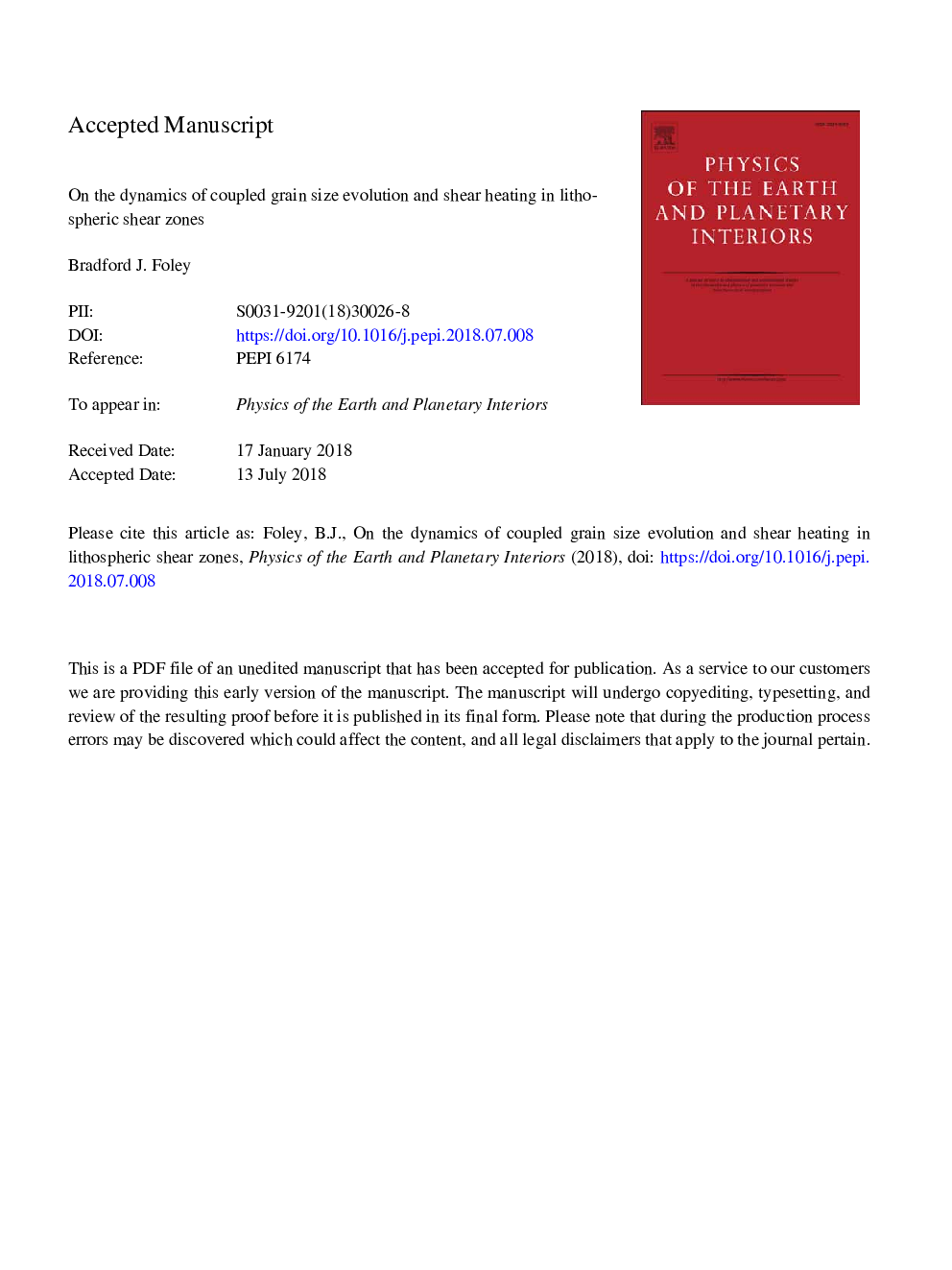| Article ID | Journal | Published Year | Pages | File Type |
|---|---|---|---|---|
| 8915649 | Physics of the Earth and Planetary Interiors | 2018 | 69 Pages |
Abstract
The formation of weak, localized shear zones in the lithosphere via tectonic forces is a requirement for the operation of plate tectonics on Earth. However, how shear zones form is not well understood. Shear heating and grain size reduction are two commonly cited mechanisms, and both processes are likely to be active in lithospheric shear zones. However, shear heating and grain size reduction can potentially act against each other, as elevated temperatures increase grain growth rates, and fast grain growth can eliminate weak shear zones formed via grain size reduction. Here, an effectively one-dimensional simple shear model that considers shear heating and grain size evolution is used to determine how grain size reduction and shear heating interact. The results indicate that for constant velocity boundary conditions at typical tectonic strain rates and mid- to lower-lithosphere temperatures, grain size reduction suppresses shear heating by weakening the shear zone. As a result shear heating at these conditions is small (â¼10â¯K or less), unless grain size reduction via damage is significantly less effective than the models assume. For constant stress boundary conditions, grain size reduction enhances shear heating and lowers the stress threshold required to trigger thermal runaway instabilities, as previous studies have found. Finally, combining shear heating and grain size reduction allows weak shear zones to form over a wider range of conditions than would result from either mechanism acting in isolation; coupling between shear heating and grain size reduction does not impede weak shear zone formation.
Related Topics
Physical Sciences and Engineering
Earth and Planetary Sciences
Geophysics
Authors
Bradford J. Foley,
